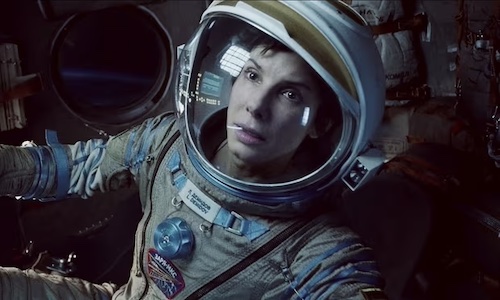
In 2013, director Alfonso Cuaron catapulted us into space via his white-knuckle thriller Gravity. The movie stars Sandra Bullock as Ryan, an imperilled astronaut who is left stranded in zero orbit after floating debris collides with the International Space Station.
Ryan must gather her resolve and all the resources at her disposal to make it back to Earth and reconcile with her young daughter. The movie co-stars George Clooney as Ryan's colleague and grossed $700 million at the box office while also receiving critical acclaim and several Oscar wins.
The majority of the reviews centered on the film's capacity for immersion. From the opening nail-biting collision sequence to Ryan's depleting oxygen levels, Cuaron's use of subjective point-of-view shots, frantic close-ups and eerily tranquil wides create a palpably visceral landscape.
Cuaron's camera is no passive observer of events. Working in league with the renowned cinematographer Emmanuel 'Chivo' Lubezki, Cuaron has the camera swirl and glide with astonishing gyroscopic agility. Equally impressive, perhaps more so, are the sustained long takes including the much-hailed opening 13 minutes.
The movie's opening sequence encompasses a remarkable amount of action as it demands actors Bullock and Clooney to hit precise marks in balletic fashion. Live-action elements merge seamlessly with CGI to put audiences in view of 'God's balcony' before everything goes catastrophically wrong.
The levels of immersion were further augmented by the movie's IMAX and IMAX 3D presentation. At the time, Gravity represented a bold step forward for the format, and now that it's 10 years old and returning to Cineworld, one can better appreciate the film's tactile IMAX properties.
The canvas of the story is naturally suited for IMAX. The vast, yawning abyss of the solar system, seemingly limitless in its expanse and only broken when Cuaron chooses to foreground other elements (a wrecked space station, the beauty of Earth itself), is further emboldened by IMAX's wider-than-usual aspect ratio.
When this visual overload is combined with the movie's complex diegesis via IMAX sound, it's truly staggering. Given the movie is set in space, it's largely silent barring Ryan's exclamations. However, Steven Price's score crosses the realm of objective sound and subjective melody to suggest impressions of explosions and impacts, while also fashioning a genuine musical arc for Bullock's character.
Little wonder that Gravity became "the third film in history to earn $100 million worldwide in IMAX engagements alone", as stated in a Forbes report. It was a true popcorn rollercoaster, further validated by IMAX's capacity to make the journey bigger, bolder and more expansive.
Even space-age veterans were bowled over. “I was so extravagantly impressed by the portrayal of the reality of zero gravity,” said Buzz Aldrin. “Going through the space station was done just the way that I've seen people do it in reality.”
Gravity's success came at a critical juncture in IMAX history. Director Christopher Nolan had already shot block sequences of his films The Dark Knight (2008) and The Dark Knight Rises (2012) with IMAX cameras, further legitimizing the format as a practical filmmaking tool.
Although Gravity wasn't shot with IMAX cameras, it demonstrated how a story could match the technical specifications of projection to go even bigger and wider than what audiences were perhaps anticipating.
At the time of Gravity's release, Nolan was busy shooting his own space odyssey, Interstellar, with IMAX cameras. Evidently, the mid-2010s was a fecund period for some of the most imaginative filmmakers in Hollywood as they sought to stretch the technical canvas as much as possible.
The making of the movie was no cakewalk. As one might expect, the desire to push the boundaries resulting in a technically fraught and arduous production that required Sandra Bullock to be suspended in a 'lightbox' (a mechanical rig fitted with thousands of LED bulbs to simulate space) for hours at a time.
Little wonder that from conception to post-production, the movie took four and half years to make. Gravity was, and still is, a boundary-pushing exercise although Cuaron, who aspired to be an astronaut when he was younger, didn't describe the movie as a "space film".
"To be honest, I never thought I was doing a science fiction movie," he told the BBC back in 2014 when the movie was jockeying for Oscars success. "I thought I was doing a drama of a woman in space."
He added: "I don't think the film is a science fiction film in the sense that it takes place in the present with technology that exists. We heighten the reality because obviously there are plausibility issues, but I'm happy with whichever label [it has]."
The affinity for playing with genre conventions, not to mention the desire to experiment with cinematic technique, is characteristic of Cuaron's work. His erotic and impassioned Mexican road trip drama Y Tu Mama Tambien (2001) utilises extended takes and an omniscient narrator to dispassionately comment on teenage sexuality and the realities of a fracturing male friendship.
Released in 2006, Cuaron's Children of Men, loosely adapted from P.D. James' The Children of Men, deployed long takes to pull audiences into a horrific, conflict-riven depiction of a dystopian Britain.
Gravity is very much an extension of these principles. It puts the IMAX technique in the service of the story without ever sacrificing the essential human heartbeat, sketching a pared-down, urgent story of survival.
If you missed Gravity in IMAX the first time or are keen to embark on the journey, the movie is on IMAX 3D release at Cineworld today. Click the link below to book your tickets.
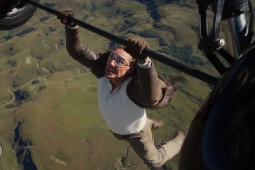





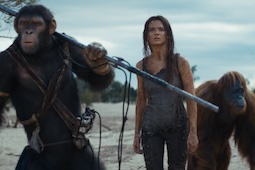
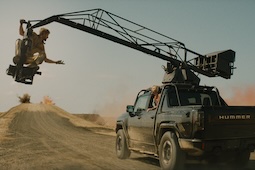
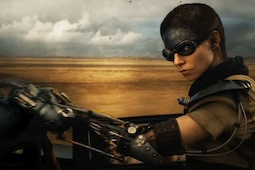





.jpg)
.png)



